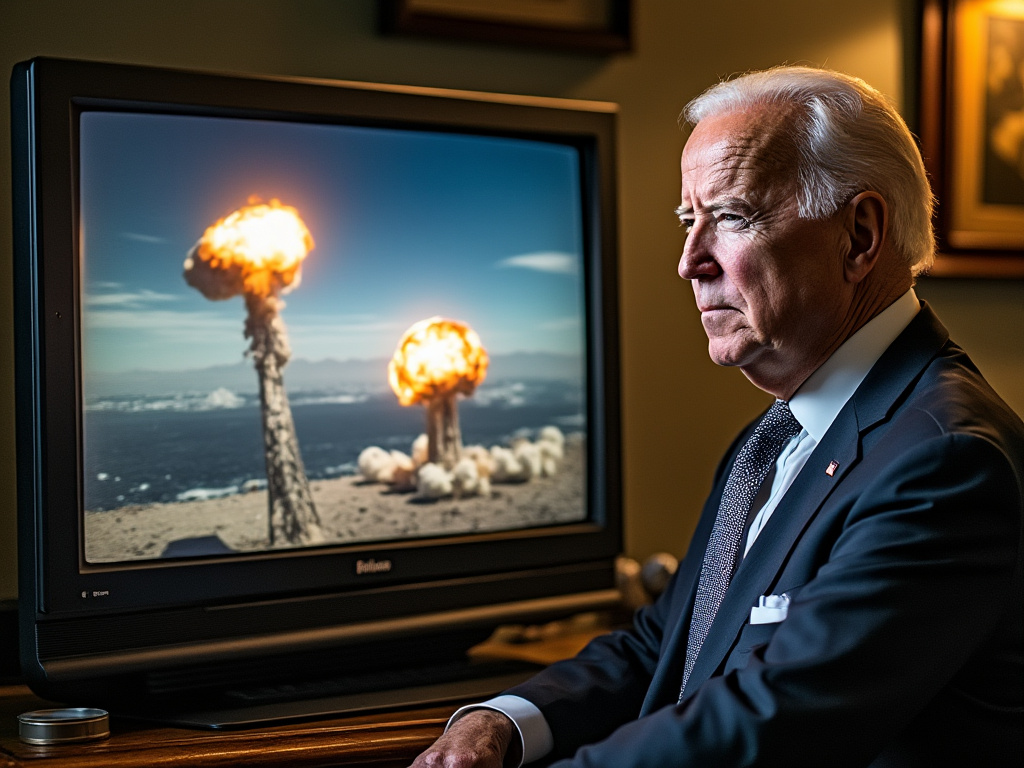In a move that has sent shockwaves through the international community, President Joe Biden has authorized Ukraine to use U.S.-supplied weapon systems to strike targets within Russia. This policy shift has raised serious concerns about the potential for escalation in the ongoing conflict between Russia and Ukraine, with some speculating whether this marks the beginning of a larger global confrontation.
Ukraine’s use of American-made ATACMS (Army Tactical Missile Systems) in a missile strike on a Russian military facility in the Bryansk region is a pivotal moment. This marks the first time U.S. long-range missiles have been employed in attacks on Russian soil. The strike reportedly targeted military installations critical to Russia’s war efforts, demonstrating Ukraine’s ability to expand the scope of its operations. While Kyiv has celebrated this as a tactical victory, the implications of such actions are causing ripples far beyond the battlefield.
Unsurprisingly, Russia has responded with sharp rhetoric and action. Russian President Vladimir Putin announced updates to the nation’s nuclear weapons policy, signaling a major shift in how Moscow views the use of its nuclear arsenal. Previously, Russia’s doctrine primarily reserved nuclear strikes for existential threats or retaliation against nuclear attacks. Now, the policy includes the possibility of using nuclear weapons in response to significant conventional military threats, especially those facilitated by nuclear-armed allies of other nations—such as the U.S. support for Ukraine.
This move has heightened fears of a potential nuclear escalation. Critics argue that the changes are a direct response to Biden’s decision to arm Ukraine with more advanced weaponry, raising the stakes in a war already fraught with geopolitical tension. Russia’s updated doctrine could be interpreted as a warning not only to Ukraine but also to NATO and other Western allies supporting Kyiv in its defense efforts.
The authorization of Ukrainian strikes into Russia represents a stark departure from the Biden administration’s earlier stance of limiting U.S. weapon use to defensive measures. While the administration has consistently framed its support for Ukraine as necessary to uphold international norms and counter Russian aggression, this decision has drawn mixed reactions. Advocates believe it will deter further Russian escalation and provide Ukraine with the tools needed to end the war on favorable terms. Critics, however, warn that it risks provoking Moscow into a more dangerous response, potentially drawing NATO and other countries into direct conflict.
In the wake of these developments, calls for restraint and diplomacy have grown louder. The United Nations and numerous global leaders have emphasized the need for dialogue and negotiation to prevent the conflict from spiraling into a larger, more destructive war. Analysts caution against overblowing the “World War III” narrative but acknowledge the heightened risk of miscalculation. Any escalation, particularly involving nuclear weapons, would have catastrophic consequences for global security.
For now, the situation remains perilous but not definitively apocalyptic. While Biden’s decision underscores the United States’ commitment to Ukraine, it also raises the stakes in a conflict that shows no signs of ending soon. The world watches with bated breath, hoping for a resolution before the flames of war consume more than just Eastern Europe.

